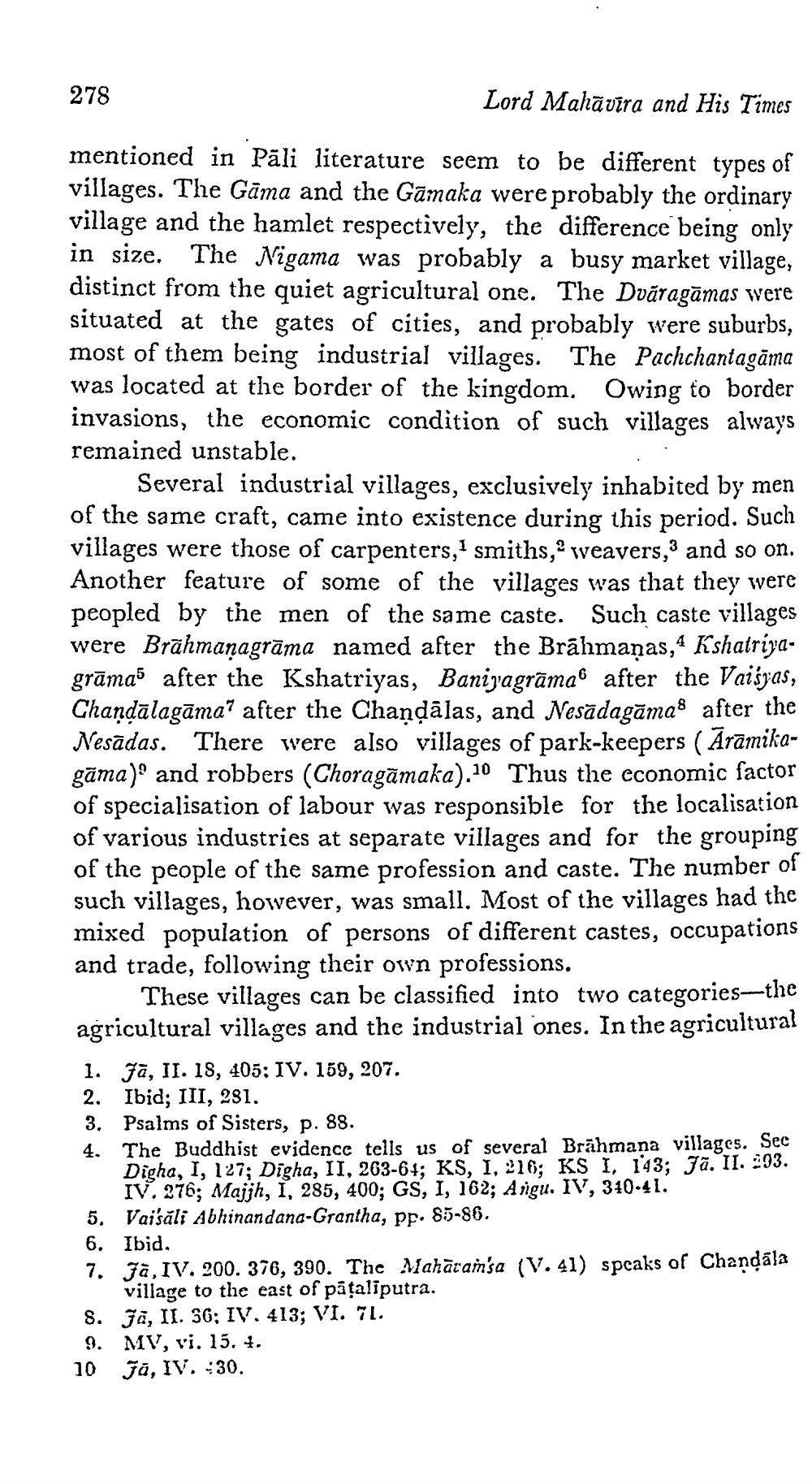________________
278
Lord Mahāvīra and His Times mentioned in Pāli literature seem to be different types of villages. The Gāma and the Gāmaka were probably the ordinary village and the hamlet respectively, the difference being only in size. The Nigama was probably a busy market village, distinct from the quiet agricultural one. The Dvãragāmas were situated at the gates of cities, and probably were suburbs, most of them being industrial villages. The Pachchantagāma was located at the border of the kingdom. Owing to border invasions, the economic condition of such villages always remained unstable.
Several industrial villages, exclusively inhabited by men of the same craft, came into existence during this period. Such villages were those of carpenters, smiths, weavers, and so on. Another feature of some of the villages was that they were peopled by the men of the same caste. Such caste villages were Brāhmanagrāma named after the Brāhmanas,4 Kshatriya. grāma5 after the Kshatriyas, Baniyagrāmas after the Vaisyas, Chandalagāna? after the Chandālas, and Nesādagāmas after the Nesādas. There were also villages of park-keepers (Ārāmikagāma) and robbers (Choragāmaka).10 Thus the economic factor of specialisation of labour was responsible for the localisation of various industries at separate villages and for the grouping of the people of the same profession and caste. The number of such villages, however, was small. Most of the villages had the mixed population of persons of different castes, occupations and trade, following their own professions.
These villages can be classified into two categories--the agricultural villages and the industrial ones. In the agricultural 1. Jā, II. 18, 405: IV. 159, 207. 2. Ibid; III, 231. 3. Psalms of Sisters, p. 88. 4. The Buddhist evidence tells us of several Brāhmana villages. Sec
Digha, I, 127; Digha, II, 263-61; KS, 1, 216; KS I, 143; Jā. II. 293.
IV. 276; Majjh, 1, 285, 400; GS, I, 162; Argu. IV, 310-41. 5. Vaisăli Abhinandana-Grantha, pp. 85-86. 6. Ibid. 7. Jā, IV. 200. 376, 390. The Mahāram'sa (V.41) speaks of Chandāla
village to the east of pataliputra. 8. Jā, II. 36; IV. 413; VI. 71. 9. MV, vi. 15. 4. 10 jā, IV. :30.




